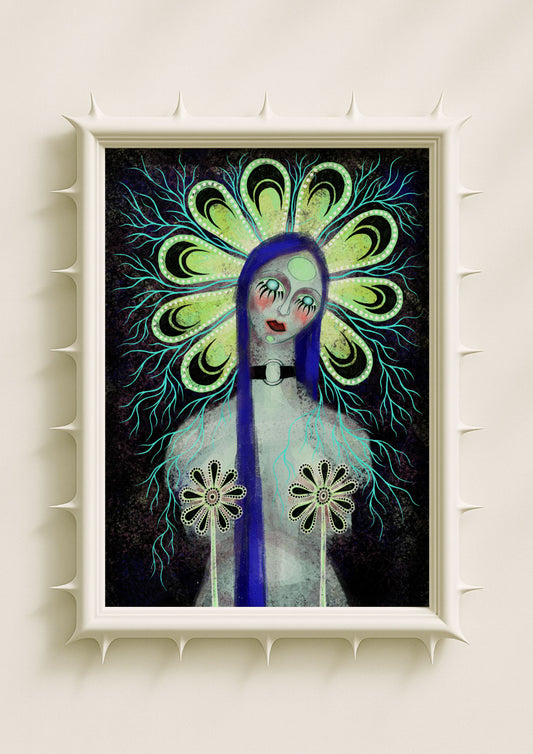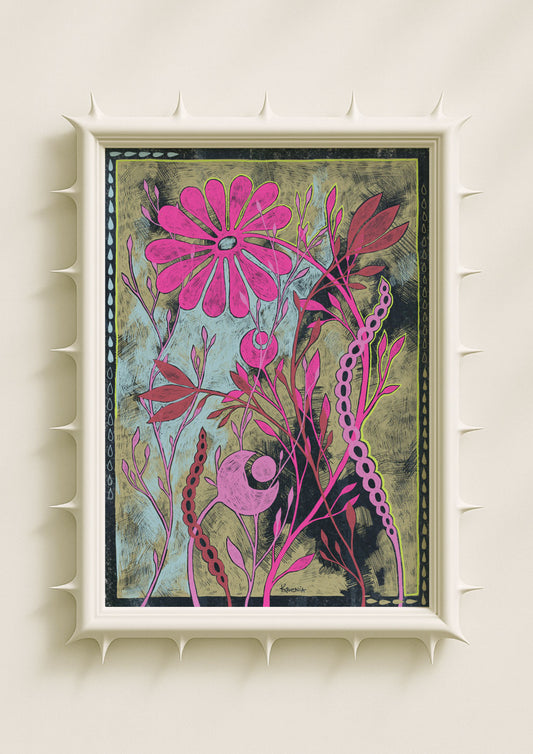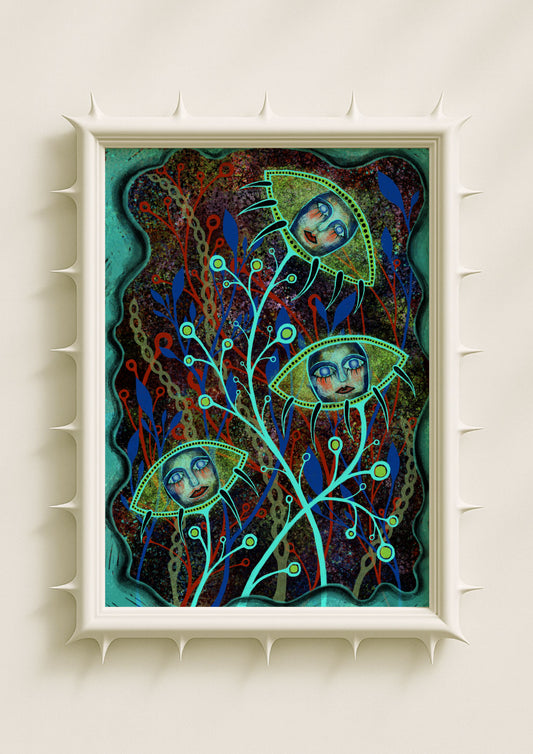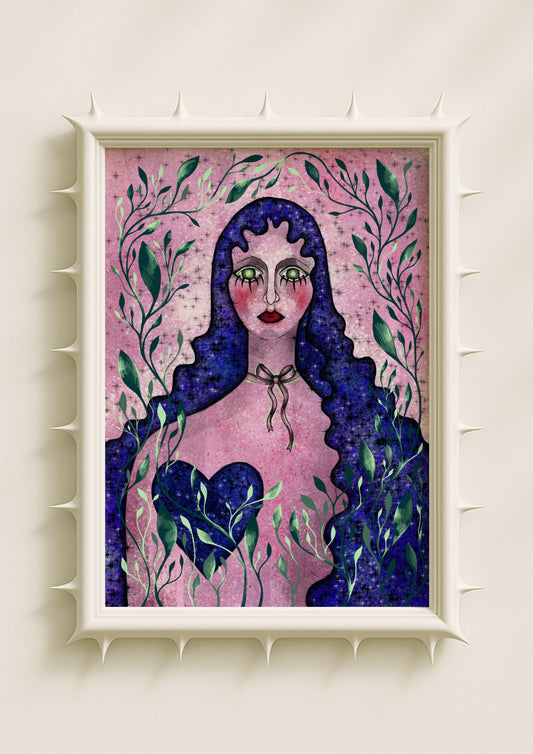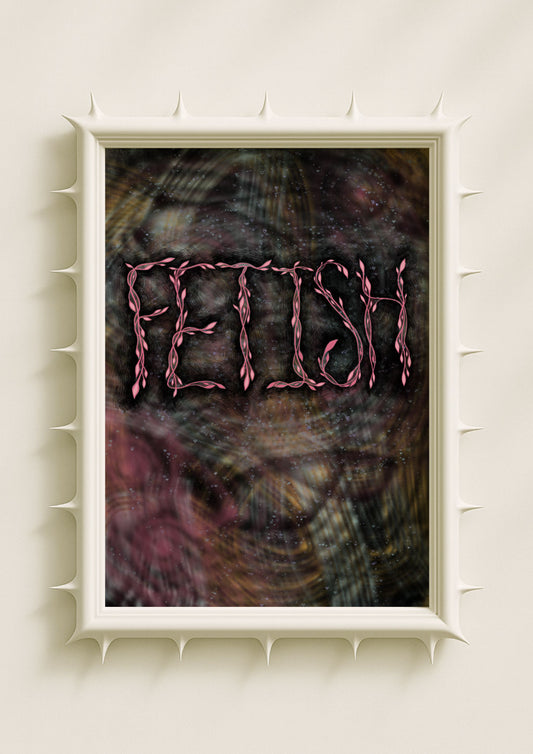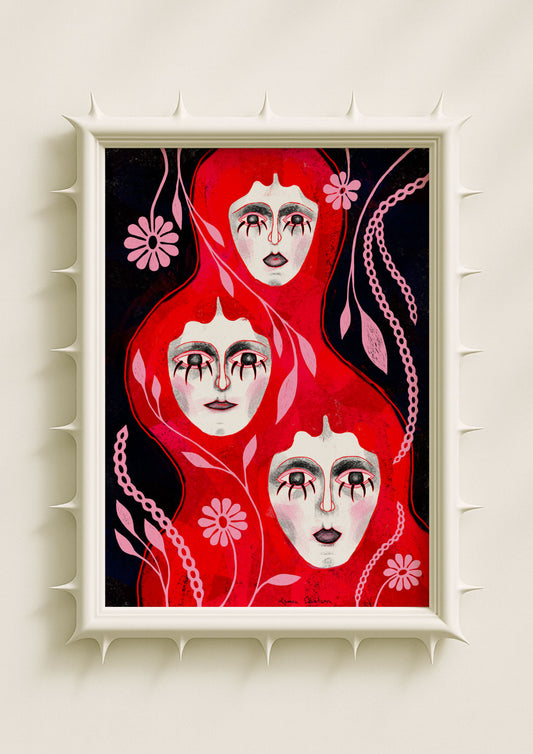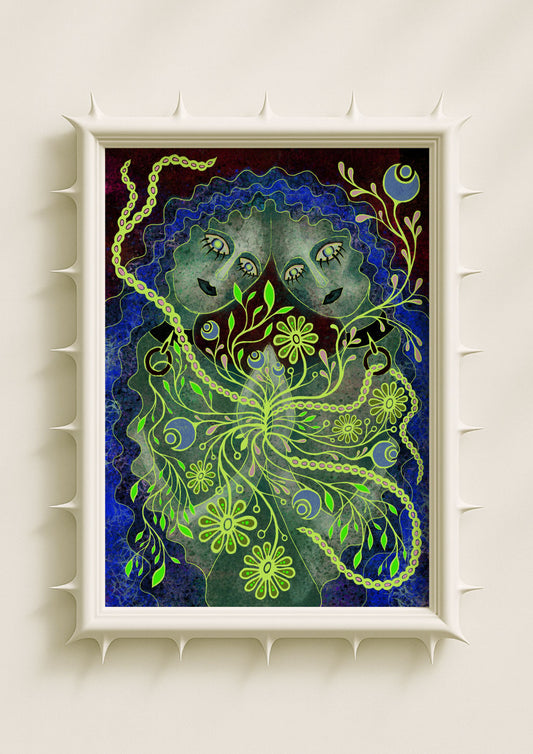When Boundaries Between Forms Begin to Blur
Hybrid creatures have become a defining presence in contemporary art — figures that exist between human, botanical and animal worlds. These forms unsettle the idea of fixed identity. They allow emotion, instinct and symbolism to merge into a single body. When I create hybrid creatures, I think of them as beings shaped by inner narratives rather than physical logic. Their mixed anatomy becomes a visual language for states that cannot be expressed through a single form: longing, transformation, fragmentation, resilience. The hybridity itself becomes the message.
Bodies as Carriers of Metamorphosis
A hybrid creature is a body in motion, even when still. Its form implies transition — a person shifting into something larger than themselves. Leaves merging with skin, elongated limbs, petal-like features or animal echoes all carry the suggestion of change. In my work, these transitions are rarely literal; they are emotional gestures. A human face partially opening like a flower suggests vulnerability or emergence. A figure with animal-like posture indicates instinct or alertness. These layered bodies reflect how emotional life often feels: in-between, expanding, dissolving, taking new shapes.

Symbolism Hidden in the Mix of Species
Hybrid creatures gather meaning from the symbolic histories of each form they combine. Botanical elements bring associations of growth, decay and cyclical renewal. Animal features carry instinct, protection, fear or wildness. Human anatomy introduces consciousness and emotional depth. When these elements merge, they create a symbolic field with multiple readings. A creature with floral eyes may evoke heightened perception or sensitivity. A torso intertwined with branches suggests rootedness or entrapment. The hybrid structure extends symbolism beyond metaphor and into the physical fabric of the artwork.
Emotional States Made Visible Through Anatomy
Hybridization is also a way to make psychological states visible. The emotional world rarely fits neatly into human proportions, and hybrid forms allow those states to expand organically. A stretched neck can express yearning. A divided body can show conflict. Limbs dissolving into botanical shapes can reflect the desire to soften or retreat. When I draw these forms, I let the emotions dictate the anatomy rather than the other way around. The creature becomes a portrait of feeling, formed through symbolic anatomy rather than realism.

The Tension Between Beauty and Unease
Hybrid creatures often create a delicate balance between fascination and discomfort. Their beauty is undeniable, yet their strangeness unsettles expectations. This tension is part of their emotional force. It mirrors the complexity of inner experience — the coexistence of softness and disorder, clarity and confusion. In my artwork, I allow some hybrids to remain slightly ambiguous, their edges blurred or unfinished. This ambiguity encourages a contemplative response. The viewer senses something familiar but cannot fully categorize it, and that openness becomes part of the artwork’s atmosphere.
Hybridity as a Metaphor for Fluid Identity
Contemporary life has made identity increasingly fluid, shifting across roles, cultures, emotions and states of being. Hybrid creatures reflect this fluidity. They embody the idea that a person can hold multiple selves at once — human instinct, emotional intuition, ancestral memory, natural rhythm. Their composite bodies act as metaphors for identities that are layered rather than singular. By showing these forms as coherent beings rather than fragments, the artwork suggests that complexity is a natural state, not a flaw.

The Dreamlike Logic of Surreal Anatomy
One of the most powerful qualities of hybrid creatures is the way they create their own internal logic. A petal growing from a cheek or a ribcage blending into branches might feel impossible, yet emotionally it makes sense. Surreal anatomy respects emotion over realism, and this dreamlike logic invites the viewer into an imaginative space. The creature becomes a guide through a symbolic world, where every part holds emotional weight and every distortion has meaning.
A Language for What Cannot Be Said
Ultimately, hybrid creatures serve as a visual language for experiences that resist direct articulation. Their forms allow emotional truth to appear in symbolic, tactile shapes. They carry contradiction and softness, fear and tenderness, instinct and reflection all within their bodies.
In contemporary art, these creatures remind us that being human often means being many things at once — rooted and changing, delicate and wild, uncertain and in transformation. Their hybrid presence offers a way to see these inner movements rendered with sensitivity, strangeness and emotional depth.
